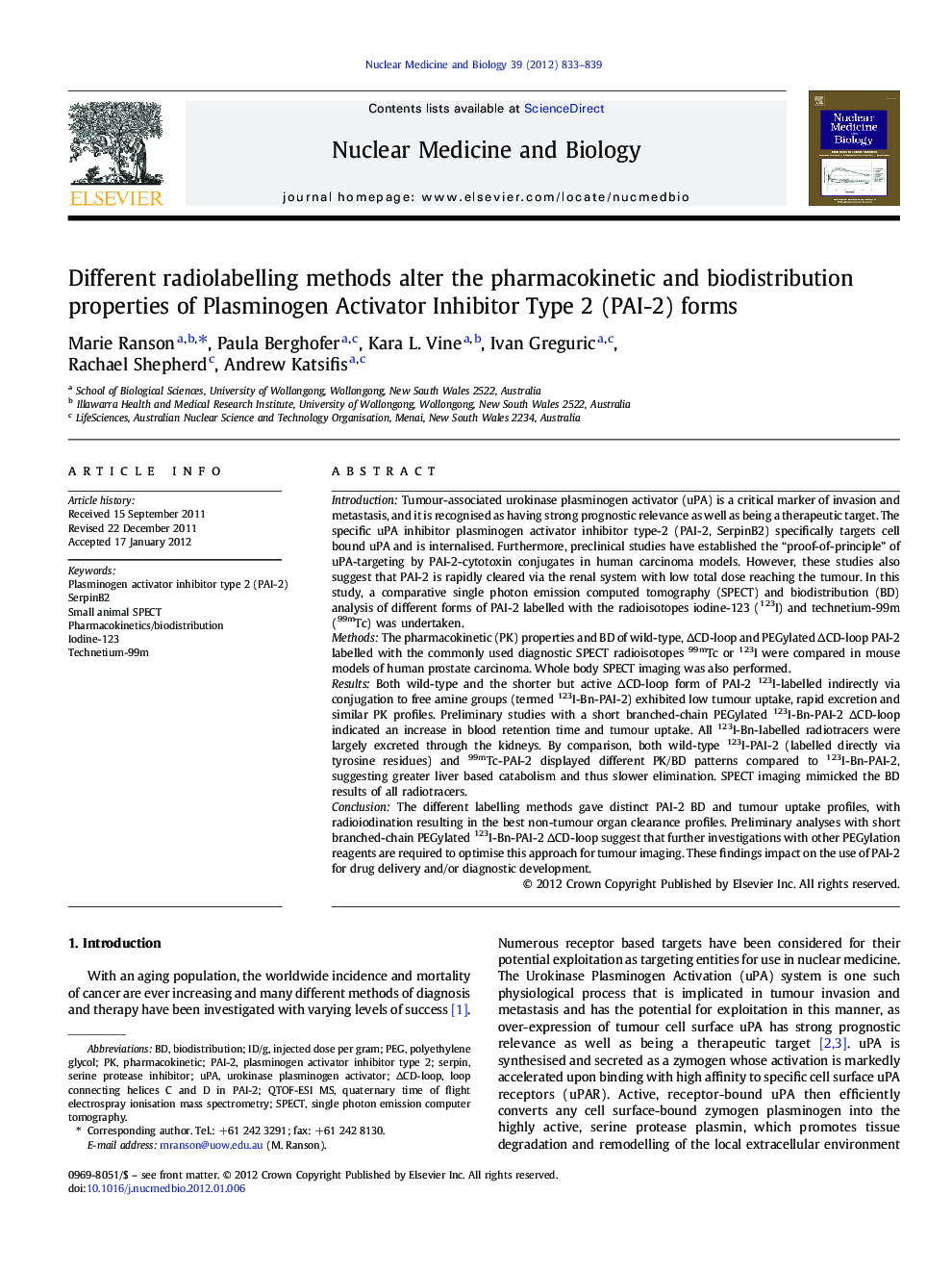| کد مقاله | کد نشریه | سال انتشار | مقاله انگلیسی | نسخه تمام متن |
|---|---|---|---|---|
| 2153794 | 1090205 | 2012 | 7 صفحه PDF | دانلود رایگان |

IntroductionTumour-associated urokinase plasminogen activator (uPA) is a critical marker of invasion and metastasis, and it is recognised as having strong prognostic relevance as well as being a therapeutic target. The specific uPA inhibitor plasminogen activator inhibitor type-2 (PAI-2, SerpinB2) specifically targets cell bound uPA and is internalised. Furthermore, preclinical studies have established the “proof-of-principle” of uPA-targeting by PAI-2-cytotoxin conjugates in human carcinoma models. However, these studies also suggest that PAI-2 is rapidly cleared via the renal system with low total dose reaching the tumour. In this study, a comparative single photon emission computed tomography (SPECT) and biodistribution (BD) analysis of different forms of PAI-2 labelled with the radioisotopes iodine-123 (123I) and technetium-99m (99mTc) was undertaken.MethodsThe pharmacokinetic (PK) properties and BD of wild-type, ΔCD-loop and PEGylated ΔCD-loop PAI-2 labelled with the commonly used diagnostic SPECT radioisotopes 99mTc or 123I were compared in mouse models of human prostate carcinoma. Whole body SPECT imaging was also performed.ResultsBoth wild-type and the shorter but active ΔCD-loop form of PAI-2 123I-labelled indirectly via conjugation to free amine groups (termed 123I-Bn-PAI-2) exhibited low tumour uptake, rapid excretion and similar PK profiles. Preliminary studies with a short branched-chain PEGylated 123I-Bn-PAI-2 ΔCD-loop indicated an increase in blood retention time and tumour uptake. All 123I-Bn-labelled radiotracers were largely excreted through the kidneys. By comparison, both wild-type 123I-PAI-2 (labelled directly via tyrosine residues) and 99mTc-PAI-2 displayed different PK/BD patterns compared to 123I-Bn-PAI-2, suggesting greater liver based catabolism and thus slower elimination. SPECT imaging mimicked the BD results of all radiotracers.ConclusionThe different labelling methods gave distinct PAI-2 BD and tumour uptake profiles, with radioiodination resulting in the best non-tumour organ clearance profiles. Preliminary analyses with short branched-chain PEGylated 123I-Bn-PAI-2 ΔCD-loop suggest that further investigations with other PEGylation reagents are required to optimise this approach for tumour imaging. These findings impact on the use of PAI-2 for drug delivery and/or diagnostic development.
Journal: Nuclear Medicine and Biology - Volume 39, Issue 6, August 2012, Pages 833–839